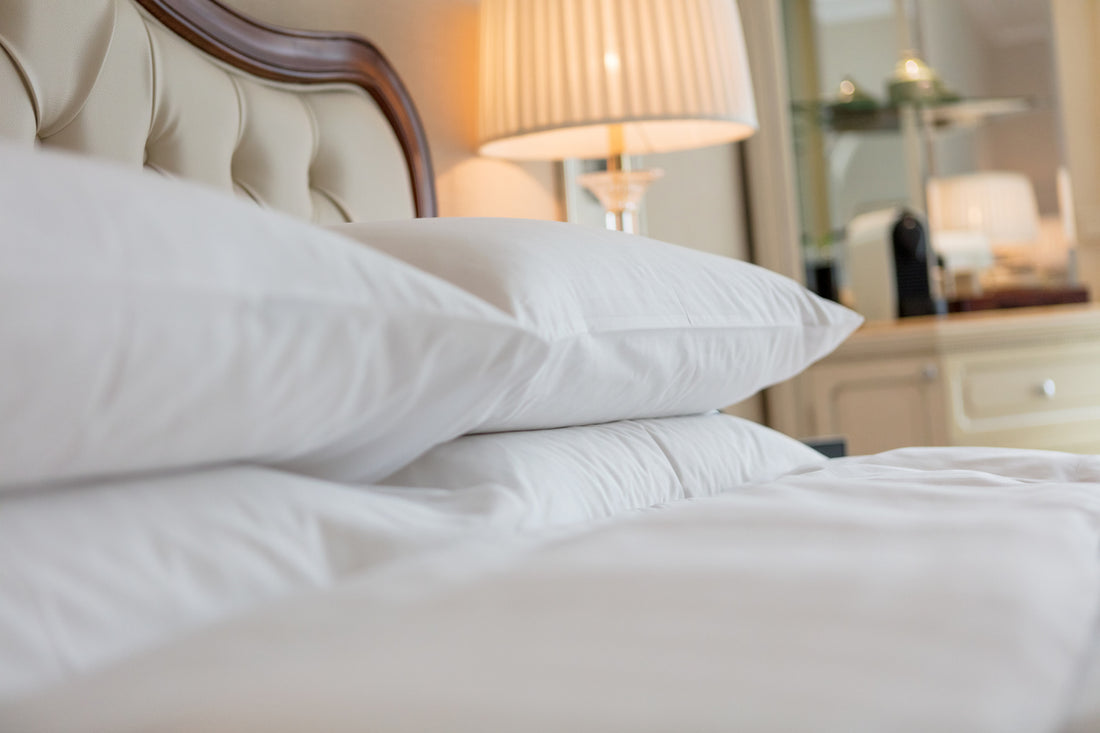
The Complete Guide to Caring for Your Pillows
Share
You've invested in high-quality sheet sets. You researched the best mattress on the market. And your duvet is the fluffiest one you'll find. But what are you doing to care for your pillows?
Pillows are one of the most important bedding items but one that's often overlooked. The right pillow can provide great head and neck support while you sleep. Choose the wrong pillow, however, and you're undoubtedly in for some sleepless nights.
When you finally find the right pillow, you'll want to take care of it to ensure it lasts! Check out this complete pillow care guide to keep them like-new for years to come.
How to Care for Your Bed Pillows
Pillows are often the dirtiest thing on your bed. They harbor the sweat, oils, and skin that comes off of our heads at night. The delicate skin of your face comes into contact with that surface for hours on end.
So keeping your pillows clean isn't just for aesthetic reasons; it can actually be a benefit to your health.
A quick note on pillow care: Make sure you know what is inside your pillow before you get started. Memory foam pillows will need different care than synthetic or down pillows.
In fact, be sure to read the manufacturer's care instructions on your pillow for the best results.
Protect Your Pillows
The best way to keep your pillows clean is to help protect them from becoming dirty in the first place. You can buy pillow protectors (similar to your mattress pad or protector) which zip over your pillow. You can then layer a pillowcase over that.
These protectors are easier to wash than the pillow itself and prevent staining from drool and sweat.
Make sure you change the pillowcase at least once a week to help prevent a build up of bacteria.
Get Them in the Wash
It surprises a lot of people to learn that cleaning their bed pillows is as easy as putting them in the washing machine. The vast majority of pillows can go in your home machine, including synthetic and down ones.
The only pillows you should avoid machine washing are memory foam; they're better off being hand-washed.
Wash your pillows two at a time with your favorite detergent.
A Few Tricks for Drying Pillows
Getting your pillows dry is very important. Any dampness can become a breeding ground for bacteria and mildew.
Dry your pillows on low heat in your dryer. No heat is best for down pillows. Be sure to check the pillow often and feel it for any remaining damp spots.
If your pillow feels lumpy, put a couple of tennis balls into the dryer with it. The balls will tumble with the pillow and get rid of any lumps and bumps.
Get It Out in the Open
Between washings, give your pillows a chance to breathe. You should fluff your pillow daily to prevent the filling from getting packed down.
It's a good idea to also get your pillows out in the sun occasionally. The ultraviolet rays of the sun will have an antibacterial effect on the pillow. The fresh air can help eliminate any odors trapped inside.
Replace at the Right Time
Don't expect your pillow to last very long. Due to all the body materials that come into contact with your pillow, it's best to replace them on an annual basis. If you use a pillow protector, then every few years should be fine.
A good rule of thumb is if you fold the pillow in half and it stays, it's time to replace it. At that point, the filling inside has broken down past the point of being able to support your head and neck.
We Have What You Need
Looking for great quality pillowcases to help protect your pillows? Check out Lifestyle Marketplace's online store. We have pillowcases made from our premier 1800-thread count material. It helps wick away moisture and keeps your pillow looking and smelling fresh.
Add pillowcases to your order and we'll include shipping for free when you spend $100 or more!
